This week we’re back at the rockery where some interesting plants are adding colour and charm.
Rockery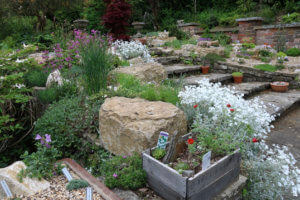
A plant of note in the rockery in early June is the frothy white Cerastium tomentosum which was transplanted from elsewhere in the garden before the rockery was built, and would take over if I allowed it to. It goes by the common name ‘Snow in Summer’ and also the extremely charming ‘Wooly Mouse-ear Chickweed’.
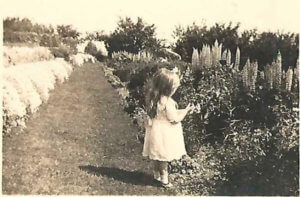
This plant has history. Here’s a picture of a little girl in my garden taken back in 1919. The garden was much bigger then and had these incredibly long paths, lined with walls dripping with Cerastium. Could my rockery plants be descendants of these original plants? It’s possible as there is a small remaining section of this wall and it still holds billowing ‘Snow in Summer’.
Erigeron aureus – Golden Fleabane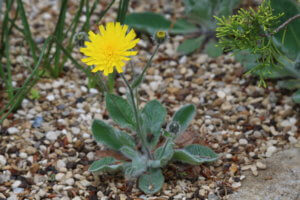
Dandelion anyone? OK it’s not a dandelion but at first glance you could be forgiven for thinking that it is. Whilst dandelions thrive unaided in every garden in the land this little golden flower was raised lovingly by me over several months. The seeds came from the Alpine Garden Society Seed Exchange.
I’m fairly certain that when I chose these seeds, I was looking at a picture of a cultivar called Erigeron aureus ‘Canary Bird’, which is a paler yellow and less weed-like plant. Even this one is supposed to have a more daisy-like flower. Is it even a Fleabane? Still, I’m quite taken with the furry leaves, and the bright yellow flowers add a splash of gold to the rockery now that the daffodils have faded.
Erinus alpinus – Fairy Foxglove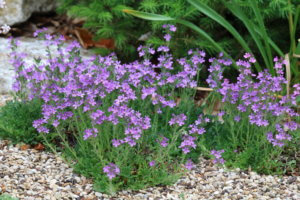
Whilst the Fleabane is a bit mediocre, this seed exchange stunner is a roaring success. Raised from seed from the 2018 Alpine Garden Society seed exchange, it sent up a few puny flowers last year. This year sees it bursting into an exuberant clump of delicate purple and pink flowers.
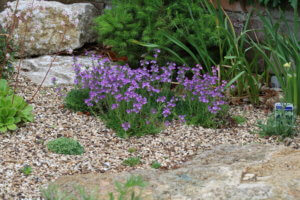
I’m glad I chose to plant loads of the plants together in this area as the clumps are expanding and merging so they have real impact in the rockery. This has to be the best advert for joining in a seed exchange. If you buy one Erinus alpinus plant in a 9cm pot from an alpine supplier, it’ll set you back £4 or £5. So this effect would cost you £30. £1 in seed and a two and a half year wait buys you this look. Plus they’re self seeding so I’ll have a few to give away.
Silene samojedorum – Catchfly
Planted in a huge clump in the centre of one of the rockery beds, this tall pink flower is adding much needed height to the rockery. Whilst it’s lovely to have mound forming and spreading alpines, the effect can be greatly enhanced by adding some taller flowers for a multi-layered display.
This is another 2018 seed exchange success. Last year there were no flowers at all (it must be a biennial) and I almost dug them all out. I only kept them as I had allot of space to fill in the rockery that first year. I’m glad I didn’t get busy with the trowel.
Helianthemum ‘Fire Dragon’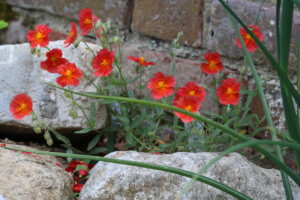
Nestled in between three rocks in a pretty planting pocket is this stunning red Helianthemum. From a distance it looks like jolly summer field poppies. This one came from a pot luck mixed bundle of alpines from the Alpine and Grass Nursery and is a real gem. Here’s another picture with a pretty pale pink thrift in the foreground.
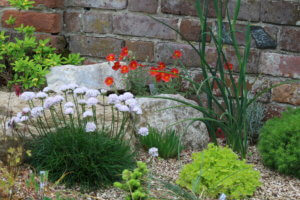
Saxifraga trough update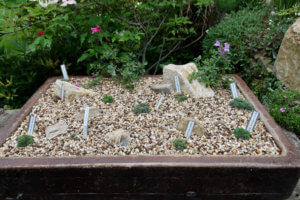
I featured this new alpine trough for Saxigrages a few weeks ago and showed how I planted it up with a new collection of plants. The good news is that apart from one, they’re all growing very well and have doubled in size. One, Saxifraga ‘jupiter’, is a bit static so I’m keeping a close eye on it. It’s got some way to go before I’ll count it worthy of its Roman god namesake.
I wrestled with the planting of the trough as I wanted it to be a showcase of these brilliant little plants but the display looked a bit flat. I’d bought a couple of small alpine penstemons at the same time so I planted them at the back of the trough to aid the transition from the sink to the border behind. These penstemons are now in flower and are quite charming. One is a purple one called ‘Amythyst’ and the second a red one called Penstemon lauetus ssp roezlii.
This seasonal diary is part of a weekly link-up of garden bloggers from around the world, called Six on Saturday. For more information and links to other blogs crammed with gardening activity, check the blog of host The Propagator.


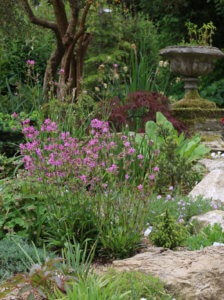

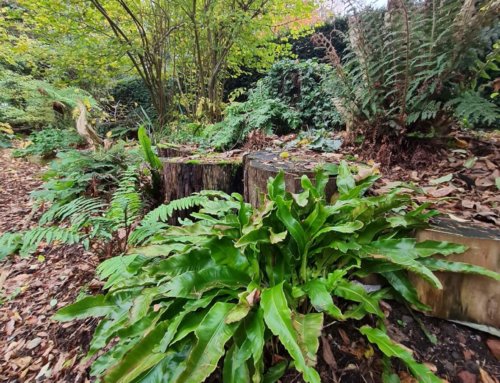
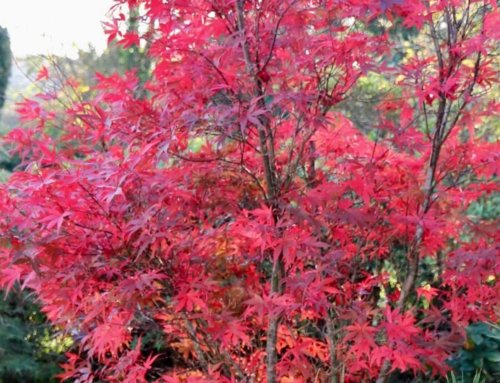
The rockery is looking great and I love the thought that the Cerastium tomentosum could be descendants of those pictured in the 1919 photo.
I’ll never know for sure Graeme but the romantic in me likes to think it dates back to those days.
How a plant will trigger a memory: The Fairy Foxglove, Erinus alpinus: We visited a walled garden near Youghal, Co. Cork quite some years ago. It was a three-quarter walled garden, open on one side down to the River Blackwater and of huge proportions, approx 5 acres. As we approached from the open side we were all taken by the pinkish colour of the walls only to discover they were covered in Fairy Foxglove. It was the most fabulous sight and must have taken years and years for the seed to spread about so much
I’m trying to picture that Paddy – it must have looked incredible. I’m going to have to keep a bit of an eye out for the Fairy Foxglove spreading itself about but I’m definitely up for a bit more of its magic around the place.
The garden is looking great and that old photo is lovely.
Thanks Linda – I’m so happy with how it’s all looking.
Oh my that photo is wonderful! Love your rockery and every single inhabitant.
It’s such a pretty photograph. I have a few from back in the day – some were from the previous owner who in turn had been bequeathed them by the people he bought the house from. I was then sent a few more by people who now live in Australia but whose grandmother lived here. It could even be her in the picture. When I have more time I should research who they all are.
Thanks Gill – it really is coming into its own now. Even my family are impressed by it!
Great old photo from 1919. Knowing that these could be the ancestors of some plants in your garden … it’s really amazing.
I’ll never know if these are descendants of the ones all those years ago but it isn’t completely far fetched. I have a few photos of the house from those days and the garden looks so different, mainly because it was created from what was a field and there were no trees. Now there are plenty of trees about and the atmosphere is completely different.
Your rockery plants are lovely! It’s a lovely thought that your Snow in Summer may descend from plants from the early 1900’s, and what a treasure to have such an old photo of your garden. I remember Snow in Summer from my first rented flat in south London in my early 20’s, it had gone rouge in the neighbour’s garden, completely surrounding her little lawn, and it looked stunning. Such impact for a small plant.
The Snow in Summer really does get about so I’m not surprised it took over the neighbour’s garden. It has a really lovely sweet smell in the sunshine so I’m pretty taken with it.
Your rockery is a huge success. I love the Fairy Foxglove – I just bought a Dwarf Snapdragon which is flowering its socks off. I need to plant it into my garden, but I’ll need to add lots of grit to the planting hole. What soil have you got in your rockery?
Hi Jude, the soil in the rockery was not ideal. I’m on clay with flint so I put allot of effort into making it as suitable for alpines as I could. I dug in loads of sand and grit. Sounds like you have the right idea to dig some grit in to the planting hole.
Just like Paddy, Erinus brings back memories of Benmore from 40 years or more back. It was growing on the walls there and I think I grew it for a bit after that. Am I right in thinking it comes in pinks and whites too? The Erigeron looks awfully like a Hawksbit or some such; don’t Erigerons have leafy stems?
Hi Jim – the “Erigeron” is a bit of a mystery as the flower is not really daisy enough. I will find it pretty amusing if I’ve spent a year and a half lovingly raising some sort of weed but then whoever donated the seed to the AGS would have been doing the same! There were too many of these germinating in the seed tray for it to have been an accidental blow-in. I will aim to spend some time with my books to try and find what it is. Thanks for your memories of Benmore. Some of the Erinus alpinus I have raised are indeed pink, but I haven’t any whites as yet.
Love the rockery and the historical connection.
Thanks Barbara.